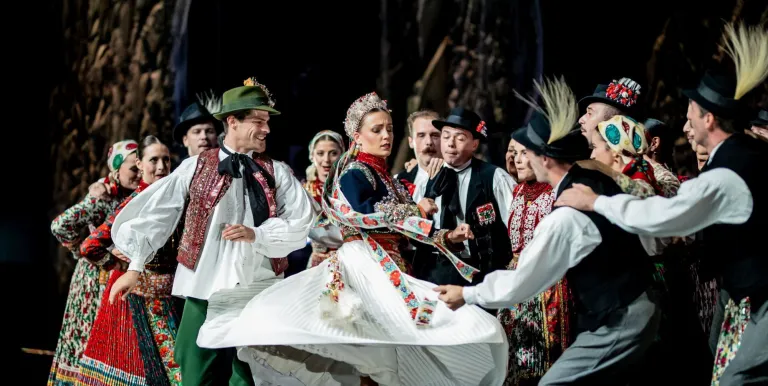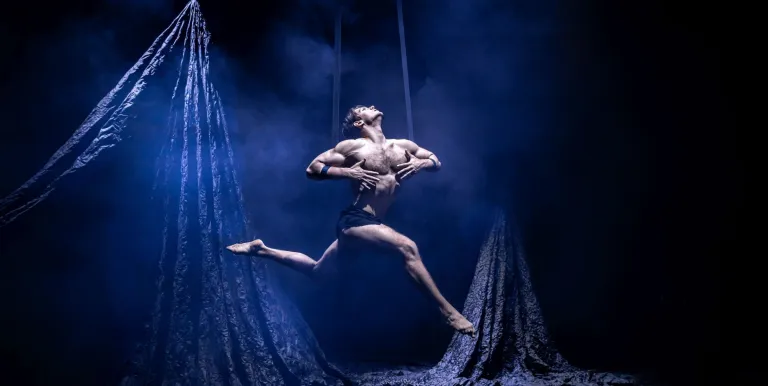Gala performance by the Csillagszemű Dance Company in honour of the legendary dance teacher of the táncház movement, Sándor Tímár as well as those who helped kickstart the movement itself.
It all began on 6 May 1972 at the Liszt Ferenc Square book club. It was a historic moment. Béla Halmos fiddler, Ferenc Sebő kontra player and Péter Éri contrabass player played Széki music, while the dancers present gathered around the leader of the Bartók Ensemble, Sándor Tímár, the legendary “Mesti”. Guided by expert leadership, the feet of urban youth started moving according to folk-dance motifs, causing all-around joy and happiness. The first meeting was followed by many more and Sándor Tímár became the legendary teacher of the blossoming movement. All future outstanding dancers, choreographers and groups of the genre grew out of his workshop. The secret to his success was the fact that, together with folk-dance researcher György Martin, he recognised—by studying original film recordings—how folk dance danced by villagers could be broken down into motifs and how it was possible to dance freely by building on these motifs. This method of shifting village culture to an urban environment was registered last fall by UNESCO as a method to follow when handing over intangible cultural heritage. The programme celebrating the 40th anniversary will be started off by the present-day “students” of the State- and Erkel Prize winning Distinguished Artist Sándor Timár, the Csillagszemű Dance Company. They will be performing the Széki choreography used by Tímár to establish a new choreographic style. The celebratory gala will see six hundred dancers, from the very young to adults, take to the stage. Musicians present at the Liszt Ferenc Square event forty years ago will evoke the past with instruments as well as short stories. The evening will come to a close with a Tímár choreography entitled Vajdakamarási táncok (Vajdakamarás Dances), which will also remind us that beside the Széki dances Mezőség dances were also very popular when the táncház movement was starting out. After the performance, the audience will have the chance to sample the authentic atmosphere of the event 40 years ago with a short Széki dance hall in the foyer. Organiser: Csillagszemű Kft.
Presented by:
-
We wish to inform you that in the event that Müpa Budapest's underground garage and outdoor car park are operating at full capacity, it is advisable to plan for increased waiting times when you arrive. In order to avoid this, we recommend that you depart for our events in time, so that you you can find the ideal parking spot quickly and smoothly and arrive for our performance in comfort. The Müpa Budapest underground garage gates will be operated by an automatic number plate recognition system. Parking is free of charge for visitors with tickets to any of our paid performances on that given day. The detailed parking policy of Müpa Budapest is available here.







